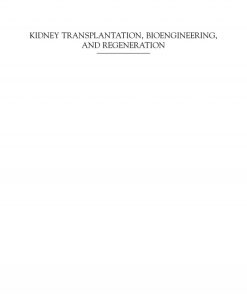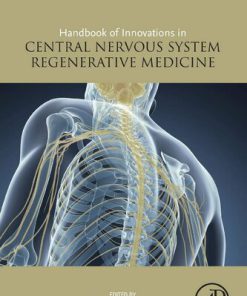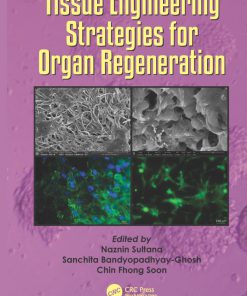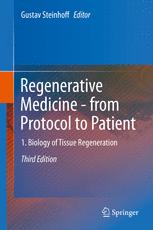Organ Repair and Regeneration Preserving Organs in the Regenerative Medicine Era 1st Edition by Giuseppe Orlando, Shaf Keshavjee ISBN 0128194510 9780128194515
$50.00 Original price was: $50.00.$25.00Current price is: $25.00.
Organ Repair and Regeneration: Preserving Organs in the Regenerative Medicine Era 1st Edition by Giuseppe Orlando, Shaf Keshavjee – Ebook PDF Instant Download/Delivery: 0128194510, 978-0128194515
Full download Organ Repair and Regeneration: Preserving Organs in the Regenerative Medicine Era 1st Edition after payment
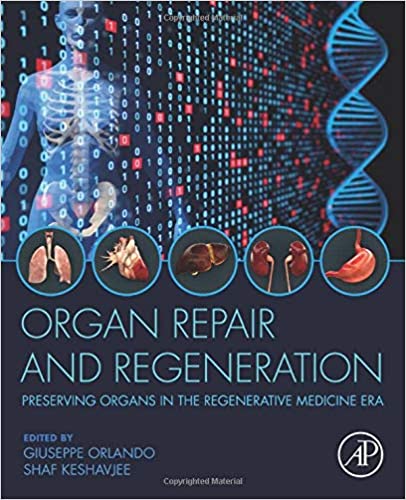
Product details:
ISBN 10: 0128194510
ISBN 13: 978-0128194515
Author: Giuseppe Orlando, Shaf Keshavjee
Organ Repair and Regeneration: Preserving Organs in the Regenerative Medicine Era encompasses updates on all organs, from the kidneys, to the lungs, liver, pancreas, intestines, and beyond. Chapters cover the pathophysiology of ischemia-reperfusion, repairing organs with MSC, repairing cardiac allografts in situ, and much more. The book conceptualizes the idea that the modern approach to organ preservation is ante literam, a form of organ repair and regeneration which, per se, is referred to as a field of health sciences under the umbrella of regenerative medicine. This book demonstrates the merging of regenerative medicine and organ transplantation.
- Covers all aspects of organ preservation, repair and regeneration
- Addresses the repair of organs that experience an Ischemia/Reperfusion (I/R) injury, those that are intended for transplantation, and specific issues related to each organ
- Presented by editors and authors who are physicians, surgeons and researchers in the field of organ transplantation and regenerative medicine
Organ Repair and Regeneration: Preserving Organs in the Regenerative Medicine Era 1st Table of contents:
Chapter 1: Clinically Significant Mind–Body Interactions: Evolutionary History of the Scientific Basis
-
Introduction
-
Ancient medical practices in Egypt, Mesopotamia, India, and China
-
Ancient Greco-Roman and European medical practice
-
Soranus: An ancient Greek authority on women’s health
-
The rationale behind developing psychosomatic awareness in healthcare
-
Structural and functional basis of psychosomatic health/illness
-
Embryological/neuroendocrinological correlates of psychosomatic pathophysiology
-
Emotions and behaviour
-
Pain: Physical and behavioural aspects
-
Trends in psychosomatic thinking generated from the seventeenth century onwards
-
Promoting the psychosomatic approach in futuristic clinical practice
-
Conclusions
Chapter 2: Teaching Psychosomatic Obstetrics and Gynaecology
-
Theoretical background
-
The biomedical model
-
Limits of the biomedical model
-
The psychosomatic or biopsychosocial model
-
Psychosomatic teaching in obstetrics and gynaecology
-
Communication skills
-
Professional listening: patient-centred communication
-
Response to emotions
-
Professional information giving: information exchange
-
Communication and counselling in special clinical situations
-
-
Clinical application of the psychosomatic or biopsychosocial model
-
The application of the biopsychosocial model: therapeutic process
-
Catharsis
-
Clarifying of conflicts and conflict resolution
-
Cognitive reframing
-
Insight and understanding
-
Stress reduction techniques
-
Helping in behavioural change
-
-
-
Psychosomatic education and training
Chapter 3: Maternal Mood in Pregnancy: Fetal Origins of Child Neurodevelopment
-
Introduction
-
Prenatal stress: Animal studies
-
Prenatal stress: Human studies
-
Types of stress
-
Underlying mechanisms
-
Conclusions
Chapter 4: Preconceptual to Postpartum Mental Health: Mental Illness and Psychosomatic Disease
-
Introduction
-
Normal physical and emotional changes of childbearing and mental illness
-
Impact of childbearing on social health in relation to mental illness
-
Epidemiology and risk of childbearing-related mental illness
-
Anxiety and mood disorders
-
Schizophrenia spectrum disorders
-
Substance misuse and psychosomatic maternal/infant effects
-
Personality disorders and conversion disorder
-
Eating disorders
-
Hyperemesis gravidarum
-
Epileptic seizures and non-epileptic attack disorders
-
Further discussions on psychotropic medication and pregnancy
-
Antidepressants and anxiolytics
-
Antipsychotics
-
Mood stabilisers and antiepileptics
-
Opioid substitutes
-
Antiemetics
-
-
Planning biopsychosocial risk-reduction to improve pregnancy outcomes
-
Prepregnancy planning and early health education
-
Early pregnancy planning
-
Good communication and providing patient-centred care
-
-
Conclusions
Chapter 5: Migraine and Pregnancy-Related Hypertension
-
Introduction
-
Impact of migraine on health and social life
-
Migraine in women
-
Migraine in pregnancy
-
Common pathogenetic aspects of migraine and pre-eclampsia
-
Migraine and pregnancy-related hypertension
-
Conclusions
Chapter 6: Disease Severity, Pain, and Patient Perception: Themes in Clinical Practice and Research
-
Introduction
-
Gynaecological comorbidity requiring a psychosomatic approach
-
Postpartum pelvic floor/perineal dysfunction and disease severity
-
Emotional pain: Infertility and pregnancy loss
-
Miscarriage
-
Stillbirth and intrauterine fetal death
-
-
Painful conditions related to pelvic organs
-
Depression and chronic pain
-
Chronic pelvic pain: A psychosomatic manifestation of varied pathogenesis
-
The therapeutic approach to managing chronic pelvic pain
-
-
Endometriosis: Variegated psychosomatic symptoms from a similar pathogenesis
-
Managing endometriosis: Increasing understanding of the psychosomatic approach
-
Developing a psychosomatic care pathway
-
Implementing age-related psychosomatic management of endometriosis
-
-
Conclusions
Chapter 7: Premenstrual Disorders: Luteal Phase Recurrent Enigmatic Conditions
-
Introduction
-
Historical correlates
-
Diagnosis
-
Differential diagnosis
-
Diagnostic instruments
-
-
Epidemiology
-
Presentation as biopsychosocial symptoms
-
Health-related quality-of-life and burden of illness
-
Personality and experience of traumatic events
-
Aetiopathogenesis
-
Ovarian hormone fluctuation
-
An interaction between sex steroids and central neurotransmitters
-
Autonomic nervous system activity
-
Other physiological differences
-
-
Treatment strategies
-
Non-pharmacological treatment options
-
Psychological interventions
-
Other complementary therapies
-
Pharmacological treatment options
-
-
Conclusions
Chapter 8: Women’s Psychosomatic Health Promotion and the Biopsychosociocultural Nexus
-
Introduction
-
The global disease burden of cancer
-
Cervical intraepithelial neoplasia: Terminologies/definitions and the aetiopathology
-
Detection of CIN using cervical cytology and colposcopy
-
The psychosociocultural aspects of receiving a diagnosis of CIN and its treatment
-
Prophylaxis of CIN
-
-
The disease burden of obesity in gynaecology and obstetrics
-
Obesity and endometrial cancer
-
The aetiopathogenesis of endometrial cancer
-
Clinicopathological correlates of endometrial cancer and obesity
-
Preventing/treating obesity to prevent endometrial cancer
-
Lifestyle alterations to prevent obesity
-
Bariatric surgery to reduce the impact of obesity
-
-
The impact of obesity on childbearing
-
Impact during pregnancy on the adolescent/child
-
Impact on ovulation and fecundity
-
Impact on subcutaneous fat thickness and obstetric outcomes
-
Impact on maternal and perinatal outcomes
-
-
-
Conclusions
Chapter 9: Vulval Pain
-
Introduction
-
Prevalence
-
Clinical findings
-
Biopsy findings
-
Other findings
-
-
The causes of vulvodynia
-
Infection
-
Diet and oxalate levels
-
Inflammation
-
Hormonal contraception
-
Neurogenic mechanisms
-
Psychological, psychosomatic, and other factors
-
-
Management
-
Conclusions
Chapter 10: Psycho-Oncology and Psychosocial Aspects of Gynaecological Cancer
-
Introduction
-
Biopsychosocial problems with gynaecological cancer
-
Outline of normal psychological responses and psychiatric diseases in cancer patients
-
General reactions to receiving a diagnosis of cancer
-
Reported psychiatric disorders in sufferers of cancer
-
Psychiatric problems specific to gynaecological cancer
-
-
Social problems
-
Why is mental healthcare necessary during cancer therapy?
-
Distress of mental disorders
-
Reduction in quality-of-life
-
Impaired decision-making
-
Suicide
-
-
Measures to treat the psychosocial problems of cancer patients
-
Psycho-oncological treatment of cancer patients
-
Mental disorders frequently noted in cancer patients
-
Adjustment disorder
-
Depression
-
Delirium
-
-
-
Extending psycho-oncological care to families of cancer patients
-
Burden on families
-
Psychiatric intervention for families
-
Implications for bereaved families
-
Burden of bereaved families
-
Impact of bereavement
-
Psychiatric intervention for bereaved families
-
-
-
-
Conclusions
Chapter 11: Psycho-Oncology: The Sexuality of Women and Cancer
-
Introduction
-
Sexual dysfunction in cancer patients
-
Timeline of cancer treatment and sexuality
-
Gynaecological cancer: Surgical treatment and radiotherapy
-
Bladder and colorectal cancer: Surgical treatment and radiotherapy
-
Breast cancer: Surgical and hormonal treatment, and radio/chemotherapy
-
Leukaemias and lymphomas: Radio/chemotherapy and surgical treatment
-
-
Hormonal deficiency
-
Medication and sexual dysfunction
-
Fertility preservation
-
Educating healthcare providers
-
Conclusions
Chapter 12: Migration, Gender, and Cultural Issues in Healthcare: Psychosomatic Implications
-
Introduction
-
Global aspects of gender-related health issues
-
Gender-related health issues in psychosomatic obstetrics and gynaecology
-
The aetiology of clinical presentations of gender-related health issues
-
Scoping clinical implications of gender-based violence
-
Disclosure and the obstetric/gynaecological impact of gender-based violence
-
Gender-related issues in generating psychosomatic disease with healthcare needs
-
Termination of pregnancy and sociocultural factors
-
Termination of pregnancy and emergency contraception
-
Ethical issues
-
Relevant issues in abortion, contraception, and family spacing
-
-
-
Training
-
Management and support pathways for managing gender-based violence
-
Prevention of gender-based violence
-
Role of the partner
-
Role of the community
-
Role of the obstetrician/gynaecologist
-
-
People also search for Organ Repair and Regeneration: Preserving Organs in the Regenerative Medicine Era 1st :
organ regeneration technology
an organism’s capacity for regeneration is most dependent on the
what organ repairs itself
differences between regeneration and repair
which organ repairs itself
Tags:
Giuseppe Orlando,Shaf Keshavjee,Organ Repair,Regeneration,Preserving,Organs,Regenerative,Medicine Era 1st
You may also like…
Biology and other natural sciences - Microbiology
Science (General)
Biology and other natural sciences Technique - Energy




